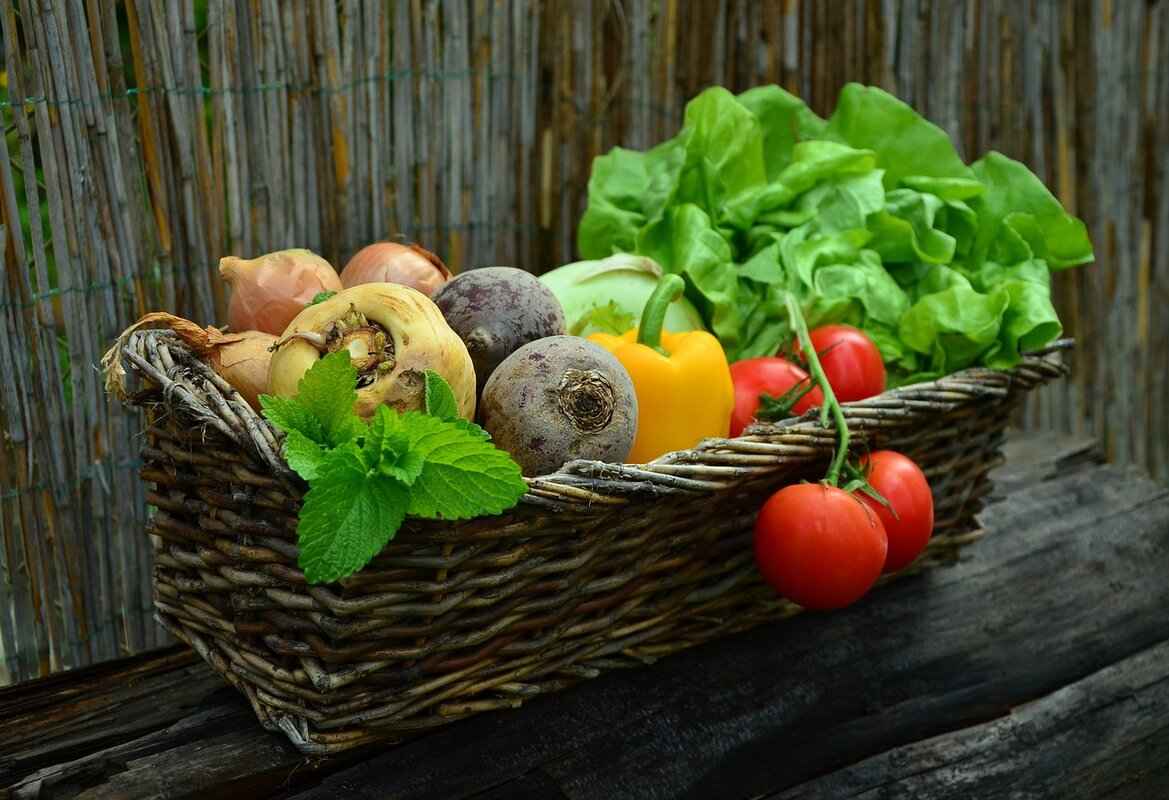Eid celebrations in India are a vibrant tapestry of cultural and culinary traditions, highlighting the significance of food in bringing families and communities together. Among the most celebrated dishes during this festive occasion are Biryani and Sheer Khurma, each carrying its own story and cultural importance.
Biryani is not just a dish; it is a culinary masterpiece that embodies the essence of Eid feasts. Its origins can be traced back to Persian influences, and over the years, it has evolved into various regional adaptations across India. The combination of marinated meat, fragrant basmati rice, and a blend of spices creates a dish that is both rich and aromatic. The preparation of Biryani often involves a meticulous layering process, where each ingredient is carefully curated to enhance the overall flavor. During Eid, families come together to enjoy this iconic dish, making it a symbol of unity and celebration.
Sheer Khurma, a traditional dessert, is a staple during Eid festivities. This sweet dish, made with vermicelli, milk, and a variety of nuts, represents joy and prosperity. The preparation involves roasting the vermicelli in ghee, then simmering it in sweetened milk, often flavored with cardamom and garnished with dried fruits. It is customary to share Sheer Khurma with family and friends, reinforcing bonds and spreading happiness during the festive season.
India’s diverse culinary landscape means that Biryani varies significantly from region to region. Each variation tells a story of local ingredients and cooking techniques. For instance, Hyderabadi Biryani is famous for its rich taste and the unique Dum cooking method, which locks in flavors through slow cooking. On the other hand, Kolkata Biryani stands out due to its inclusion of potatoes and boiled eggs, offering a distinct flavor profile that sets it apart from its counterparts.
Mutton is often the meat of choice during Eid celebrations, revered for its rich flavor and tenderness. It is prominently featured in dishes such as Biryani and various kebabs. The preparation of mutton involves marination with spices, allowing the meat to absorb rich flavors, making it a centerpiece of festive meals. Its significance goes beyond just taste; it symbolizes abundance and celebration during this auspicious occasion.
Eid meals are a grand affair, often featuring a plethora of dishes that go beyond Biryani and Sheer Khurma. Kebabs, pulao, and various side dishes create a lavish spread for family gatherings. Kebabs, whether grilled or fried, are particularly popular due to their smoky flavors and tender textures, making them an ideal appetizer. Additionally, a variety of side dishes complement the main courses, enhancing the overall dining experience.
Sweets are an integral part of Eid festivities, symbolizing joy and abundance. Traditional treats like Gulab Jamun and Baklava are commonly enjoyed alongside main dishes. These sweets not only satisfy the sweet tooth but also enhance the festive spirit, making the occasion even more memorable. Sharing sweets with neighbors and friends is a common practice, fostering community bonds and spreading happiness.
In conclusion, the culinary traditions of Eid in India reflect a rich cultural heritage, with dishes like Biryani and Sheer Khurma at the forefront. These dishes not only tantalize the taste buds but also serve as a means of bringing people together in celebration. As families gather around the table, the shared experience of enjoying these iconic dishes creates lasting memories and strengthens familial ties.

What Makes Biryani a Must-Have for Eid?
Biryani is not just a meal; it’s a culinary masterpiece that has become synonymous with Eid celebrations across India. This iconic dish, rich in flavor and steeped in tradition, serves as a centerpiece for festive gatherings, bringing families and friends together in joyous celebration. The preparation of Biryani is an art form, often passed down through generations, with each family adding their unique touch to this beloved dish.
At its core, Biryani is a layered rice dish that combines marinated meat, fragrant basmati rice, and a blend of aromatic spices. The use of spices such as cardamom, cloves, and saffron not only enhances the flavor but also creates an enticing aroma that fills the air, signaling the start of the festivities. The rich flavors of Biryani are often complemented by raita (yogurt sauce) or salan (spicy gravy), making it a complete meal.
What truly sets Biryani apart during Eid is its ability to reflect the diverse culinary heritage of India. Different regions boast their own variations, each telling a story of local ingredients and cooking techniques. For instance, the Hyderabadi Biryani is known for its rich taste and is prepared using the Dum cooking method, which involves slow-cooking the meat and rice together, allowing the flavors to meld beautifully. On the other hand, Kolkata Biryani incorporates potatoes and boiled eggs, offering a unique twist that distinguishes it from other regional varieties.
Why is Biryani so integral to Eid celebrations? The answer lies in its ability to bring people together. During Eid, families often gather to share meals, and Biryani serves as a symbol of abundance and togetherness. Its preparation is often a communal activity, with family members joining in to create this delicious dish. The act of sharing Biryani is a way to express love and hospitality, making it a vital part of Eid feasts.
Moreover, the choice of meat in Biryani also carries significance. Mutton is a popular choice during Eid due to its rich flavor and tenderness. It is often reserved for special occasions, making its inclusion in Biryani a mark of celebration. Additionally, chicken and beef variations are also prevalent, catering to different palates and preferences.
| Region | Key Ingredients | Cooking Method |
|---|---|---|
| Hyderabad | Mutton, Basmati Rice, Saffron | Dum Cooking |
| Kolkata | Chicken, Potatoes, Boiled Eggs | Layered Cooking |
| Lucknow | Mutton, Aromatic Spices, Yogurt | Kacchi Biryani (Raw Meat) |
In conclusion, Biryani is more than just a dish; it is a celebration of culture and community. Its rich flavors, diverse variations, and the joy it brings to festive occasions make it a must-have for Eid. As families come together to enjoy this exquisite dish, they not only savor the taste but also the memories and traditions that come with it, making each bite a reminder of the love and unity that Eid represents.

How is Sheer Khurma Prepared for Eid Celebrations?
Sheer Khurma is a beloved traditional dessert that holds a special place in the hearts of many during the festive occasion of Eid. This exquisite sweet dish, predominantly made with vermicelli and milk, is not only a culinary delight but also a symbol of joy and togetherness. Its preparation is steeped in cultural significance, making it a staple at Eid celebrations across India.
To create the perfect Sheer Khurma, several key ingredients are essential:
- Vermicelli: The primary ingredient, which is lightly roasted to enhance its flavor.
- Milk: Full-fat milk is preferred for a rich and creamy texture.
- Dry Fruits: A mix of almonds, pistachios, and cashews add crunch and flavor.
- Dates: Chopped dates not only sweeten the dish but also add a unique taste.
- Cardamom: Ground cardamom imparts a fragrant aroma, elevating the overall experience.
- Sugar: Adjusted according to taste to balance the sweetness.
The preparation of Sheer Khurma is a delightful process that brings families together. Here’s a step-by-step guide:
1. Begin by roasting the vermicelli in a pan until it turns golden brown.2. In a separate pot, boil the milk and let it simmer.3. Add the roasted vermicelli to the simmering milk and cook until the vermicelli is soft.4. Stir in chopped dates, sugar, and ground cardamom.5. Mix in the dry fruits and let the mixture cook for a few more minutes.6. Serve warm or chilled, garnished with additional nuts.
Sheer Khurma is more than just a dessert; it embodies the spirit of Eid. Traditionally prepared to celebrate the end of Ramadan, this dish symbolizes the joy of sharing and togetherness. Families often prepare it in large quantities to share with friends and neighbors, reinforcing community bonds. The act of making Sheer Khurma is often a family affair, with each member contributing to the process, making it a cherished ritual.
While the core ingredients remain the same, variations of Sheer Khurma can be found across different regions in India. In some areas, coconut is added for a tropical twist, while others might incorporate rose water for a floral aroma. These regional adaptations reflect local tastes and customs, adding to the dish’s rich tapestry of flavors.
Sheer Khurma is not just a dessert; it is an experience. Its creamy texture combined with the crunch of nuts and the sweetness of dates creates a symphony of flavors that tantalize the taste buds. The dish is often served at the end of festive meals, leaving a lasting impression on guests. Its ability to evoke nostalgia and warmth makes it a must-try for anyone celebrating Eid.
In conclusion, Sheer Khurma is a quintessential part of Eid celebrations, representing not only a delicious treat but also the values of sharing and community. Its preparation and enjoyment are steeped in tradition, making it a beloved dish that continues to bring joy to families and friends during this special time.

Which Regional Variations of Biryani are Popular During Eid?
Biryani, a dish that has captured the hearts of food lovers across the globe, is especially significant during the festive occasion of Eid in India. Each region in India has its own distinctive take on this iconic dish, showcasing local ingredients, spices, and culinary techniques. Exploring these regional variations not only enhances our understanding of Biryani but also deepens our appreciation for the cultural diversity that exists within Indian cuisine.
When it comes to Biryani, the variations are as diverse as the regions they come from. Here are some of the most popular styles:
- Hyderabadi Biryani: Known for its rich flavors, Hyderabadi Biryani is often made using the Dum cooking method, where marinated meat and partially cooked rice are layered and slow-cooked together. This technique allows the spices to penetrate deeply, resulting in a fragrant and flavorful dish.
- Kolkata Biryani: This variation is unique due to its inclusion of potatoes and boiled eggs, which adds a distinct sweetness. The use of saffron and a subtle blend of spices makes Kolkata Biryani stand out, offering a taste that is both rich and comforting.
- Lucknowi (Awadhi) Biryani: Originating from the royal kitchens of Awadh, this Biryani is characterized by its melt-in-the-mouth tender meat and aromatic spices. The cooking process involves layering marinated meat with rice, and cooking it in a sealed pot to retain moisture and flavor.
- Malabar Biryani: Hailing from the coastal regions of Kerala, Malabar Biryani is often made with short-grain rice and features a combination of spices that highlight the region’s culinary heritage. The use of coconut and curry leaves adds a unique twist to this beloved dish.
- Thalassery Biryani: Another gem from Kerala, Thalassery Biryani is known for its aromatic rice and the use of chicken or mutton. The dish is often garnished with fried onions, raisins, and cashews, making it a festive favorite.
Each of these Biryani styles not only offers a unique flavor profile but also tells a story about the region’s culture and traditions. The spices used, the method of cooking, and even the accompaniments reflect the local culinary practices and ingredients available.
Understanding these variations provides a deeper insight into the significance of Biryani during Eid celebrations. It is a dish that brings families together, transcending regional boundaries while celebrating the rich tapestry of Indian cuisine. During Eid, the preparation and sharing of Biryani become a cherished tradition, symbolizing unity and joy among loved ones.
What is the Hyderabad Biryani Style?
The Hyderabadi Biryani is not just a dish; it is a culinary masterpiece that embodies the rich cultural heritage of Hyderabad. Renowned for its complex flavors and aromatic spices, this biryani has become a symbol of celebration, especially during festive occasions like Eid. The preparation of Hyderabadi Biryani is an art, primarily distinguished by the traditional Dum cooking method, which involves sealing the pot with dough and cooking it over low heat. This technique allows the ingredients to infuse their flavors deeply, resulting in a dish that is both fragrant and flavorful.
The heart of Hyderabadi Biryani lies in its ingredients. Typically, it consists of marinated meat, usually mutton or chicken, layered with long-grain basmati rice. The meat is marinated in a mixture of yogurt, spices, and herbs, which tenderizes it and enhances its flavor. The use of saffron and fried onions adds a distinctive aroma and richness to the dish. The layering of rice and meat, combined with the slow cooking process, ensures that every grain of rice is infused with the savory juices of the meat.
The Dum cooking method is pivotal in creating the unique flavor profile of Hyderabadi Biryani. By sealing the pot, the steam generated during cooking allows the spices and aromas to meld together, creating a harmonious blend of flavors. This slow cooking process ensures that the meat becomes tender while the rice absorbs the spices, resulting in a dish that is both moist and flavorful. It is this meticulous cooking technique that sets Hyderabadi Biryani apart from other biryani varieties.
While the traditional Hyderabadi Biryani is famous, there are several variations that cater to different palates. The Pakki Biryani, where the meat and rice are cooked separately before being layered, is a popular choice. On the other hand, the Kacchi Biryani involves marinating raw meat with spices and layering it with uncooked rice, allowing the meat to cook along with the rice. Each variation offers a distinct taste while maintaining the essence of Hyderabadi Biryani.
Hyderabadi Biryani is typically served with raita (yogurt sauce), which balances the spices and adds a cooling effect. Accompaniments like salad and mirchi ka salan (a spicy chili curry) are also common, enhancing the overall dining experience. This combination of flavors and textures makes Hyderabadi Biryani a complete meal, perfect for festive gatherings.
Hyderabadi Biryani holds a special place in the hearts of many, especially during celebrations like Eid. Its rich flavors and elaborate preparation make it a centerpiece of festive meals, symbolizing unity and joy. Sharing a plate of biryani with family and friends fosters a sense of togetherness, making it more than just a dish; it is a tradition that brings people closer.
In conclusion, the Hyderabadi Biryani is a true representation of culinary excellence, showcasing the art of slow cooking and the intricate balance of spices. Its popularity continues to grow, not just in India but around the world, making it a beloved dish for all occasions.
How Does Kolkata Biryani Stand Out?
Kolkata Biryani is a culinary gem that reflects the rich heritage and diverse cultural influences of the city. This iconic dish, which has its roots in the Mughal era, has evolved over time, incorporating local ingredients and flavors that make it truly unique. One of the most distinctive features of Kolkata Biryani is its inclusion of potatoes and boiled eggs, which not only enhance the flavor profile but also add a touch of heartiness to the dish.
The hallmark of Kolkata Biryani lies in its carefully selected ingredients. The use of long-grain Basmati rice is essential, as it provides a fragrant base that complements the rich spices. The marinated meat, usually mutton or chicken, is cooked to perfection, infusing the rice with its savory juices. The addition of potatoes is a tradition that dates back to the time of the Nawabs, who used them as a means to stretch the dish and feed more people. The boiled eggs serve as a protein-rich garnish, elevating the dish’s presentation and taste.
Kolkata Biryani is typically prepared using the Dum cooking method, which involves slow-cooking the ingredients in a sealed pot. This technique allows the flavors to meld beautifully, resulting in a rich and aromatic dish. The slow cooking ensures that the meat becomes tender and succulent, while the rice absorbs all the spices, creating a delightful harmony of flavors. The final touch is a sprinkle of fried onions and a dash of kewra water, which adds a floral aroma that is simply irresistible.
The cultural significance of Kolkata Biryani cannot be overstated. It is not just a meal; it is a symbol of the city’s history and its culinary evolution. The dish is often associated with festive occasions and family gatherings, making it a staple during celebrations like Eid. Its preparation and sharing among loved ones reflect the warmth and hospitality that characterize Bengali culture. The legacy of Kolkata Biryani is preserved in numerous restaurants and homes, where traditional recipes are passed down through generations.
If you’re eager to experience the flavors of Kolkata Biryani at home, you can easily recreate this dish with some essential ingredients and a bit of patience. Start by marinating your choice of meat with yogurt, spices, and a hint of saffron. While the meat marinates, prepare the rice with whole spices like cardamom, cloves, and cinnamon. Layer the marinated meat and the partially cooked rice in a heavy-bottomed pot, add the potatoes, and seal the pot to allow the flavors to develop. The result will be a fragrant and flavorful Biryani that captures the essence of Kolkata.
Kolkata Biryani stands out not only for its unique ingredients but also for the emotions it evokes. It is a dish that brings people together, celebrating the joys of sharing a meal. Whether enjoyed at a bustling restaurant or at home with family, Kolkata Biryani is a true representation of the city’s culinary artistry. Its rich history and distinctive flavors make it a must-try for anyone seeking to explore the diverse food culture of India.

Why is Mutton a Popular Choice for Eid Dishes?
Mutton is not just a dish; it is a culinary tradition that embodies the spirit of Eid celebrations. Its rich flavor and tender texture make it a preferred choice for many festive dishes, especially in regions where mutton is a staple. This article delves into the reasons behind the popularity of mutton during Eid, exploring its cultural significance and the variety of dishes that showcase this exquisite meat.
During Eid, mutton is revered for its rich taste and juicy tenderness. It is often associated with the spirit of sharing and feasting, making it a centerpiece in many households. The preparation of mutton dishes often involves traditional recipes passed down through generations, enhancing the emotional and cultural value attached to the meal.
Mutton is featured prominently in several traditional dishes served during Eid. One of the most celebrated is Biryani, a fragrant rice dish cooked with marinated mutton, spices, and saffron. The slow-cooking method allows the flavors to meld beautifully, resulting in a dish that is both aromatic and flavorful.
- Kebabs: Mutton kebabs are another favorite, marinated in a blend of spices and grilled to perfection. Their smoky flavor and tender texture make them a popular appetizer during Eid gatherings.
- Pulao: Mutton pulao, a simpler rice dish, is also commonly served, offering a milder flavor profile that complements the spices of other dishes.
Across India, each region boasts its unique take on mutton dishes, reflecting local ingredients and culinary techniques. For instance:
- Hyderabadi Biryani: Known for its rich taste and use of saffron, this version employs the Dum cooking method, which enhances the flavors through slow cooking.
- Kolkata Biryani: This variation includes potatoes and boiled eggs, offering a distinct flavor profile that sets it apart from its counterparts.
Choosing high-quality mutton is crucial for achieving the best flavor and texture in dishes. Fresh, well-sourced mutton ensures that the dishes are not only delicious but also safe to consume. Many families prefer to purchase mutton from trusted local butchers who can provide meat from well-reared animals.
Family traditions play a significant role in how mutton is prepared and served during Eid. Many families have their secret recipes that have been handed down through generations. These recipes often include unique spice blends or cooking methods that reflect the family’s heritage, making each Eid celebration a unique culinary experience.
Sharing a meal is a powerful way to strengthen social bonds, and mutton dishes during Eid often serve this purpose. Families and friends gather to enjoy mutton-based meals, fostering a sense of community and togetherness. The act of preparing and sharing these meals is a cherished tradition that enhances the festive spirit of Eid.
In conclusion, mutton’s popularity during Eid is deeply rooted in its cultural significance, flavor, and the communal experience it fosters. Whether it’s in the form of a rich Biryani or succulent kebabs, mutton continues to be a beloved choice that enhances the festive atmosphere of this joyous occasion.

What Other Traditional Dishes Accompany Eid Celebrations?
Eid celebrations in India are marked by a rich tapestry of culinary delights that go well beyond the renowned Biryani and Sheer Khurma. The festive meals serve as a reflection of cultural diversity and family traditions, showcasing a variety of dishes that bring people together. This article delves into the traditional dishes that complement the Eid feast, highlighting their significance and the joy they bring to gatherings.
While Biryani is often the star of the show, a plethora of other dishes grace the dining table during Eid. These dishes not only enhance the meal but also symbolize the spirit of sharing and togetherness that the festival embodies.
- Kebabs: These delightful morsels are a staple at Eid feasts. Ranging from seekh kebabs to shami kebabs, they are prepared with a variety of meats and spices, then grilled or fried to perfection. Their smoky flavor and tender texture make them a favorite appetizer, often served with mint chutney or tangy sauces.
- Pulao: This fragrant rice dish, often cooked with spices, vegetables, and sometimes meat, serves as a wonderful accompaniment to Biryani. Pulao comes in various regional styles, each with its unique blend of ingredients, making it a versatile choice for festive meals.
- Raita: A cooling yogurt-based side dish, raita is essential for balancing the spices in the main dishes. Common variations include cucumber raita and boondi raita, which add a refreshing touch to the meal.
- Salad: Fresh salads made with diced vegetables and a sprinkle of lemon juice or chaat masala are often included to provide a crunchy contrast to the rich dishes. They add color and freshness to the spread.
- Breads: Various types of bread, such as naan or paratha, are also served. These are perfect for scooping up the flavorful gravies and curries that accompany the meal.
India’s vast cultural landscape means that Eid meals vary significantly from region to region. In the north, you might find kebabs and mutton curries dominating the spread, while in the south, you may encounter dishes like Hyderabadi Biryani and korma. Each region adds its unique touch, reflecting local ingredients and cooking styles.
No Eid celebration is complete without a selection of traditional sweets. Alongside Sheer Khurma, other popular desserts include:
- Gulab Jamun: These soft, syrup-soaked balls are a favorite among many, symbolizing sweetness and joy.
- Baklava: A rich pastry made of layers of filo dough filled with nuts and sweetened with honey, often enjoyed by families during the festive period.
- Jalebi: This spiral-shaped sweet, crispy on the outside and juicy on the inside, adds a delightful crunch to the dessert table.
As families gather to celebrate Eid, the variety of dishes served reflects the warmth and unity of the occasion. Each dish tells a story, whether it’s a cherished family recipe or a regional specialty, contributing to the overall festive experience. The act of sharing these meals strengthens bonds and creates lasting memories, making Eid not just a celebration of faith, but also a celebration of food and family.
How are Kebabs Integral to Eid Feasts?
Kebabs are not just a dish; they are an experience that adds a unique flavor to the joyous celebrations of Eid. These delectable morsels, whether grilled to perfection or fried until golden brown, are a staple in many households during this festive season. Their smoky flavors and tender textures make them an irresistible appetizer, often enjoyed by family and friends gathered around the dining table.
During Eid, a variety of kebabs take center stage, each bringing its own distinct taste and style. Among the most popular are:
- Seekh Kebabs: Made from minced meat mixed with spices and herbs, these kebabs are shaped onto skewers and grilled, offering a juicy and flavorful bite.
- Shami Kebabs: A combination of minced meat, lentils, and spices, these kebabs are shallow-fried to achieve a crispy exterior, making them a favorite among guests.
- Tandoori Kebabs: Marinated in yogurt and spices, these kebabs are cooked in a traditional clay oven, resulting in a smoky flavor that is hard to resist.
Kebabs symbolize hospitality and generosity, two core values celebrated during Eid. The act of preparing and sharing these dishes with loved ones reflects the spirit of togetherness that the festival embodies. Families often prepare large quantities of kebabs, ensuring that there is enough to share with neighbors and friends, further strengthening community bonds.
The preparation of kebabs during Eid is often a family affair. Recipes may vary from region to region, but the love and effort put into the cooking process remain constant. Ingredients such as fresh herbs, spices, and quality meat are essential. The marination process, often lasting several hours, allows the flavors to meld perfectly, resulting in a dish that is both aromatic and flavorful.
Kebabs are often served with a variety of accompaniments that elevate the dining experience. Common pairings include:
- Mint Chutney: A refreshing dip that complements the richness of the kebabs.
- Onion Rings: Thinly sliced onions, sometimes sprinkled with lemon juice, add a crunchy texture.
- Roti or Naan: These breads serve as the perfect vehicle for enjoying kebabs.
Kebabs are often part of a larger spread during Eid, which includes dishes like Biryani, pulao, and various sweets. This diverse array of food not only showcases culinary traditions but also represents the abundance and joy of the festival. The presence of kebabs adds a savory element to the meal, balancing the sweetness of desserts like Sheer Khurma and Gulab Jamun.
In conclusion, kebabs are a fundamental component of Eid celebrations, embodying the essence of festivity and togetherness. Their rich flavors, diverse varieties, and the communal spirit they inspire make them an essential dish on this special occasion.
What Role Do Sweets Play in Eid Celebrations?
Eid celebrations are a time of joy, family gatherings, and, most importantly, a rich array of culinary delights. Among these, sweets hold a special place, symbolizing happiness, abundance, and the spirit of sharing. During Eid, the act of giving and receiving sweets is a cherished tradition that enhances the festive atmosphere.
Sweets are more than just a treat; they are integral to the very essence of Eid. They represent the joy of the occasion and the fulfillment of spiritual obligations. Families often prepare an assortment of traditional sweets, which are shared with friends, relatives, and neighbors, thereby fostering community bonds. The act of sharing sweets serves as a gesture of goodwill and unity, emphasizing the importance of togetherness during this auspicious time.
- Gulab Jamun: These small, round balls made from khoya (reduced milk) are deep-fried and soaked in sugar syrup, creating a delightful contrast of textures and flavors.
- Baklava: A rich, sweet pastry made of layers of filo dough, filled with chopped nuts and sweetened with honey or syrup, Baklava is a favorite among many during Eid.
- Seviyan (Vermicelli): Often prepared as Sheer Khurma, this sweet dish made from vermicelli, milk, and dried fruits is a staple in many households, symbolizing prosperity.
- Kheer: A creamy rice pudding flavored with cardamom and garnished with nuts, Kheer is another beloved dessert that adds to the festive spread.
The preparation of sweets for Eid often begins days in advance, with families coming together to create these delicious treats. Traditional recipes are passed down through generations, ensuring that each sweet carries a story and a connection to the past. The process of making sweets is often a communal activity, where family members contribute their skills and share in the joy of creation.
Sharing sweets during Eid is deeply rooted in cultural traditions. It is a way of expressing love and gratitude, and it symbolizes the spirit of giving. Many families prepare extra sweets to distribute to those in need, reinforcing the values of compassion and charity that are central to Eid celebrations. This practice not only spreads joy but also strengthens community ties and fosters a sense of belonging.
Sweets complement the savory dishes served during Eid, creating a balanced meal that delights the palate. After enjoying rich dishes like Biryani and Kebabs, indulging in sweets provides a satisfying conclusion to the feast. The sweetness of desserts contrasts beautifully with the savory flavors of main courses, making the overall dining experience more enjoyable.
As culinary trends evolve, many families are experimenting with modern twists on traditional sweets. From fusion desserts that blend different cultural influences to healthier versions using natural sweeteners, the creativity in sweet-making reflects the dynamic nature of food traditions. These innovations keep the spirit of Eid alive while also catering to contemporary tastes and dietary preferences.
In summary, sweets play a vital role in Eid celebrations, symbolizing joy, unity, and generosity. From traditional favorites like Gulab Jamun and Baklava to innovative new recipes, the array of sweets enhances the festive spirit and brings families and communities together. The act of sharing these delightful treats embodies the true essence of Eid, making it a time of celebration and connection.
Frequently Asked Questions
- What is the significance of Biryani during Eid?
Biryani is more than just a dish; it’s a celebration on a plate! Its rich flavors and aromatic spices make it a festive centerpiece that brings families together during Eid. Imagine the delightful aroma wafting through the air, inviting everyone to gather around the table!
- How is Sheer Khurma different from other desserts?
Sheer Khurma is a unique sweet treat that stands out during Eid. Made with vermicelli, milk, and a sprinkle of nuts, it symbolizes joy and abundance. It’s like a warm hug in a bowl, perfect for sharing with loved ones!
- What are some popular regional variations of Biryani?
India boasts a treasure trove of Biryani variations! From the rich, fragrant Hyderabadi Biryani to the unique Kolkata Biryani with potatoes and boiled eggs, each region adds its own twist, making every bite a journey through different cultures.
- Why is mutton favored in Eid dishes?
Mutton’s rich flavor and tenderness make it a star in Eid cuisine. It’s often featured in dishes like Biryani and kebabs, elevating the festive experience. Think of it as the cherry on top of an already delicious cake!
- What other dishes are typically served during Eid?
Eid meals are a feast for the senses, often including kebabs, pulao, and a variety of sides. It’s like a lavish buffet that invites everyone to indulge and celebrate together!














